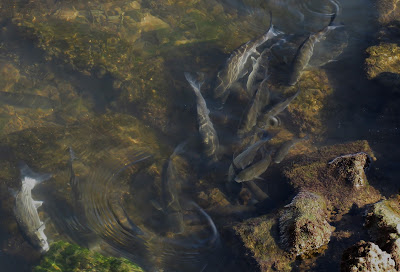Nov 24, 2015
Portugal, Algarve, Tavira, Nov. 16, 2015
Tavira's origins date back to the late Bronze Age. In the 8th century BC the Phoenicians created a colonial urban center here with massive walls, at least two temples, two harbours and a regular urban structure. The Moorish occupation of Tavira between the 8th and 13th centuries left its mark on the agriculture, architecture and culture of the area. That influence can still be seen in Tavira today with its whitewashed buildings, Moorish style doors and rooftops. In the 17th Century the port on its river was of considerable importance, shipping produce such as salt, dried fish and wine. Like most of the Algarve its buildings were virtually all destroyed by the earthquake of 1755.
The city has since been rebuilt with many fine 18th-century buildings along with its 27 churches.
The original economic reliance of Tavira on the fishing industry has now passed due to changed migration patterns of Tuna and further silting up of the river Gilao.
The economy is nowbased on the tourist industry including opening of golf courses in the near vicinity.
Church tower. There are plentiful churches in Tavira, our guidebook says 27.
Typical Portuguese road sign.
Praça da Republica - the central square in Tavira
Grey mullets grazing on the stones below the 'Roman' (actually Moorish) bridge, which links the two parts of the town across the River Gilão
Left river bank from the 'Roman' bridge
One of the many charming narrow roads in Tavira
The 'Roman' bridge and the beginning of Praça da Republica
The 'Roman' bridge
Fishing boats on the River Gilão
Fishing boats on the River Gilão
Two churches next to another, behind the remains of the Tavira Castle the church of Santa Maria do Castelo, dates from the 13th century. It is built on the site of a Moorish mosque and the clock tower has been remodeled from the original Muslim one. In the background Ingreja de Santiago.
Subscribe to:
Post Comments (Atom)













No comments:
Post a Comment